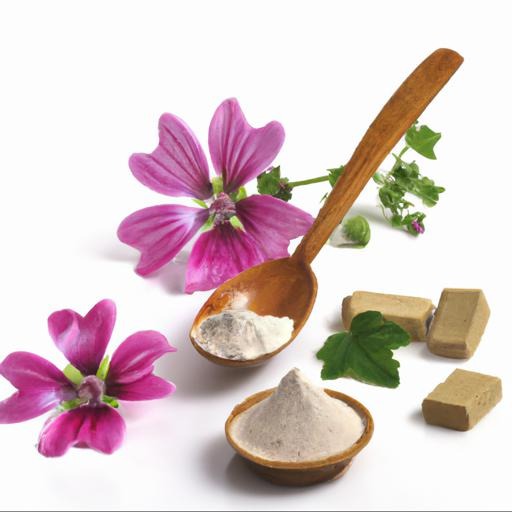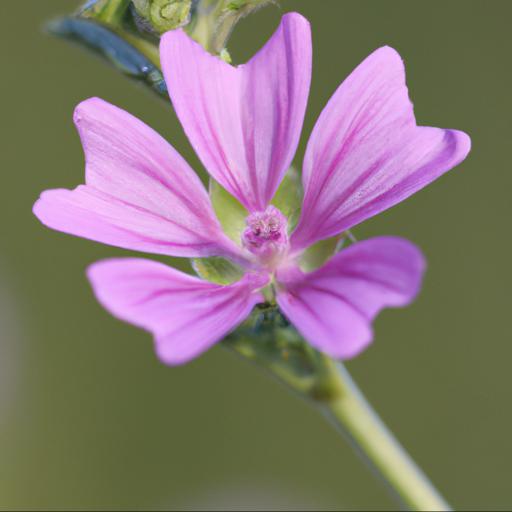Malva moschata, commonly known as Musk Mallow, is a species of flowering plant native to Europe and parts of Asia. It is an attractive plant with its soft pink or white flowers and its distinctive musky scent. This plant has a long history of use in traditional medicine and is known for its many medicinal properties.
In this blog, we’ll explore the many benefits of Malva moschata, from its anti-inflammatory and antiseptic properties to its potential use in treating skin conditions. We’ll also look at how it can be used in the kitchen, from adding flavor to dishes to making herbal teas.
Finally, we’ll discuss the best way to grow and care for this unique and beneficial plant.
Health benefits of malva moschata

Malva moschata is a hardy but beautiful wildflower that makes a great addition to any UK garden. Known for its bright purple flowers, Malva moschata is much more than a pretty addition to your garden: it also offers a range of health benefits.
From herbalist and traditional medicine perspectives, Malva moschata has been used over the centuries as a medicinal plant to treat a range of illnesses. It’s believed that the plant’s phytochemicals can help fight off bacterial and fungal infections, soothe pain, and reduce inflammation. Malva moschata is also a potent nerve tonic, able to help restore and regulate nerve function, as well as stimulate the production of endorphins.
It is believed Malva’s unique properties are able to take the strain off the body’s organs by speeding up metabolism, boosting immunity, and increasing circulation. In the garden, Malva flavors a variety of salads and other meals, so incorporating it into your diet can add more than just aesthetic appeal to your garden.
In addition to being a nutritional powerhouse, Malva is also known for its anti-inflammatory power as well, helping to reduce pain and swelling in the joints, skin and entire body. This unique healing ability is attributed to the presence of potent phytonutrients and antioxidants, which help to reduce inflammation and promote general health. Malva moschata is a hardy, attractive flower that can bring a lot of beauty and practical health benefits to any UK garden—all without taking up much space or requiring a lot of maintenance.
By utilizing this plant’s natural health benefits and adding it to your garden, you can both enjoy its beauty and reap its health rewards.
How to grow malva moschata

Malva moschata, otherwise known as musk mallow, is a wonderfully fragrant and attractive addition to any garden. It grows in many different climates and is surprisingly easy to take care of and propagate.
To help you to start growing musk mallow in your garden, here are some tips. Firstly, it’s important to choose the right soil for your musk mallow; it should be moist, loamy and well-draining with plenty of organic matter. If you want to boost growth, you can add a fertilizer with an appropriate NPK ratio.
When planting your musk mallow, it’s best to transplant it in early spring when the weather is still cool. Make sure to keep the crown of the plant above ground level, and loosen the roots before you transplant. After that, you will need to regularly water your musk mallow to keep it happy; the best time to water is early in the morning.
Lastly, although musk mallow is a generally easy plant to maintain, it’s still important to remove unwanted weeds and pests on a regular basis. Not only will this help keep your musk mallow healthy, but it will also reduce the chance of it being affected by diseases or competing for resources.
By following these easy steps, you can successfully grow musk mallow in your garden and enjoy its unique aroma and beauty. With a bit of effort and consistency, it won’t be long until your own musk mallow plants are flourishing.
Uses of malva moschata

. Malva moschata, also known as Musk Mallow, is a stunningly beautiful flowering plant that is a great addition to any garden.
Native to North Africa, this wildflower is an upright mounding perennial with gray-green, downy foliage and sweetly fragrant, cup-shaped, deep pink to lavender flowers that bloom from summer to autumn. In addition to its beauty, this hardy species of Malva has many uses in the garden, including medicinal and culinary applications. For gardeners who value its ornamental value, Malva moschata makes an excellent border for perennial beds, foundation plantings and naturalized areas.
It does require adequate sunshine and well drained soil, but once established, it thrives with little to no maintenance, making it very low maintenance indeed. For extra impact or to provide additional benefit to the garden, Malva moschata can also be combined with other flowering plants and shrubs in beds, making a lovely combination of foliage and blooms. In addition to its beauty, Malva moschata also has some interesting medicinal and culinary uses.
The leaves of the plant have been used to treat bruising, burns, and other skin ailments, and as a mild sedative for anxiety and insomnia. For culinary use, the leaves and flowers can be combined in salads, or the flowers can also be made into a syrup.
Finally, Malva moschata can also be employed in herbal teas and potpourris, imparting a light sweetness to the recipes. Malva moschata is an incredibly versatile and incredibly beautiful wildflower, adding an array of colors and fragrances to the garden while providing valuable medicinal and culinary benefits.
No wonder this incredible species of Malva is so popular with gardeners!
Potential side effects of malva moschata
Malva moschata, or musk mallow, is a perennial flowering plant of the Malvaceae family. It produces delightful cream-colored flowers in the early months of summer. The plant is well known for its medicinal properties and is often used to treat a variety of ailments including coughs, wounds and skin irritations.
Despite the medicinal benefits that this plant provides, it also has the potential to have some adverse side effects. The first potential side effect is allergic reactions.
Malva moschata contains certain proteins that can trigger allergic reactions in certain individuals. People with allergies to other plants of the same family or with a history of hay fever should stay away from it or use it with caution. Swelling of the face, lips, tongue or throat, difficulty breathing and skin redness or itching are all common signs of an allergic reaction.
The second major potential side effect is that it can be toxic if taken in large doses. Malva moschata contains compounds such as flavonoids and terpenoids that have anti-inflammatory and antibacterial effects, but large doses of these substances can be toxic to humans.
To prevent this, it is important to follow the recommended doses when using this plant medicinally. Overconsumption of Malva moschata should be avoided, as it may lead to nausea, vomiting and headaches. The third potential side effect is digestive issues.
Malva moschata contains certain compounds that can irritate the digestive tract and cause diarrhea and abdominal cramps. It is wise to start with small doses and observe for any changes in digestion in order to avoid this side effect.
In conclusion, Malva moschata can be a useful medicinal herb that is packed with beneficial properties. However, it is important to keep in mind the three potential side effects discussed above and exercise caution when consuming or using the plant.
Final Touch
Malva moschata, also known as Musk Mallow, is a flowering plant native to Europe and Asia. It is a hardy, perennial plant which produces attractive pink or white flowers, and can be grown in a variety of soils.
The plant is used medicinally to treat a variety of ailments, including inflammation, skin disorders, and digestive issues. Additionally, it can be used as a tea or tincture to help reduce stress and anxiety. Malva moschata is an easy to grow and attractive plant that can be used for its medicinal benefits as well as its beauty.
FAQ
What are the common names for Malva moschata?
Common names for Malva moschata include Musk Mallow, Musk-Scented Mallow, Musk-Scented Marshmallow, and Musk Mallow Marshmallow.
What are the medicinal uses of Malva moschata?
Malva moschata has a variety of medicinal uses, including treating skin conditions, digestive issues, and respiratory ailments. It is also used to reduce inflammation, improve circulation, and reduce pain. Additionally, it has been used to treat urinary tract infections, reduce fever, and boost the immune system.
What is the scientific classification of Malva moschata?
Malva moschata is classified as a flowering plant in the Malvaceae family, and its scientific name is Malva moschata.
What are the nutritional benefits of Malva moschata?
Malva moschata is a nutritious plant that is high in vitamins and minerals. It is a good source of vitamin C, iron, magnesium, potassium, and calcium. It also contains a range of antioxidants, which can help protect against oxidative stress and inflammation. Additionally, it has anti-inflammatory and anti-bacterial properties, which can help reduce the risk of certain diseases.
How is Malva moschata used in traditional medicine?
Malva moschata is used in traditional medicine as a diuretic, laxative, and anti-inflammatory. It is also used to treat skin conditions such as eczema, psoriasis, and acne. Additionally, it is believed to have anti-cancer properties and is used to treat respiratory conditions such as asthma.
What are the potential side effects of consuming Malva moschata?
The potential side effects of consuming Malva moschata include nausea, vomiting, diarrhea, stomach pain, and dizziness. It may also cause allergic reactions such as skin rashes, itching, and swelling. It should be used with caution in pregnant and breastfeeding women.

